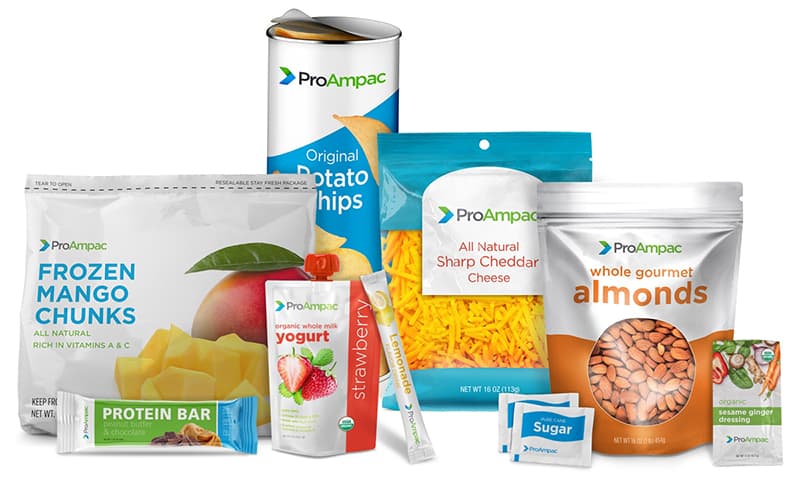Flexible packaging printing is an important part of the packaging industry, as it allows for the production of lightweight and convenient packaging solutions that are suitable for a wide range of products. In recent years, there have been a number of trends in flexible packaging printing that are shaping the future of the industry.
One trend that has gained traction in recent years is the increasing demand for sustainability in packaging. Consumers and businesses alike are becoming more aware of the environmental impact of packaging, and are looking for packaging solutions that are eco-friendly. In response, flexible packaging manufacturers are investing in technologies and materials that are more sustainable, such as biodegradable films and inks.
Another trend in flexible packaging printing is the increasing use of digital printing technologies. Digital printing allows for the production of short-run, customized packaging solutions, and it is becoming an increasingly popular choice for businesses that need to produce small quantities of packaging with unique designs. Digital printing is also faster and more efficient than traditional printing methods, which makes it an attractive option for businesses looking to reduce their production costs.
In the future, it is likely that we will see further developments in flexible packaging printing that are driven by the increasing demand for sustainability and the adoption of digital technologies. This may include the development of new, more sustainable materials and the use of advanced digital printing technologies that are capable of producing even higher-quality prints.
Sustainable Solutions
One sustainable recent trend in flexible packaging is the use of mono material. Mono material packaging refers to packaging that is made from a single type of material, rather than a combination of different materials. The use of mono material packaging has gained popularity in recent years due to its potential to improve sustainability in the packaging industry.
One of the main benefits of using mono material packaging is that it can be more easily recycled. Packaging that is made from a single type of material is easier to process and recycle than packaging that is made from a combination of materials, as it does not require the separation of different materials before it can be recycled. This can help to reduce waste and increase the overall recycling rate of packaging materials.
In addition to its potential to improve recycling rates, mono material packaging can also help to reduce the environmental impact of packaging in other ways. For example, some materials, such as cardboard and paper, are more environmentally friendly to produce than others, such as plastic. Using mono material packaging made from these more sustainable materials can help to reduce the overall carbon footprint of the packaging industry.
One potential drawback of using mono material packaging is that it may not be as strong or durable as packaging made from a combination of materials. However, advances in materials science have led to the development of new, high-strength mono material packaging solutions, such as paper-based packaging that is reinforced with fibers or bio-based plastics that are derived from renewable resources.
Overall, the use of mono material packaging has the potential to contribute significantly to the sustainability of the packaging industry. By reducing the complexity of the recycling process and promoting the use of more sustainable materials, mono material packaging can help to reduce waste and minimize the environmental impact of packaging. . For example, some materials, such as cardboard and paper, are more environmentally friendly to produce than others, such as plastic. Using mono material packaging made from these more sustainable materials can help to reduce the overall carbon footprint of the packaging industry.
Environmentally Friendly Inks
There are several types of environmentally friendly inks that are commonly used in flexible packaging. One such type is water-based inks, which are made from water-soluble pigments and are considered to be more eco-friendly than other types of inks. Water-based inks are easy to clean up and do not release harmful volatile organic compounds (VOCs) into the air during the printing process. They are also typically more biodegradable than other types of inks.
Another type of environmentally friendly ink that is commonly used in flexible packaging is soy-based ink. Soy-based inks are made from soybean oil, which is a renewable resource, and they are considered to be more sustainable than petroleum-based inks. Soy-based inks are also typically biodegradable and have a lower VOC content than other types of inks.
Another type of ink that is gaining popularity in the flexible packaging industry is bio-based ink. Bio-based inks are made from renewable resources, such as plant-based oils or bio-based polymers, and they have a lower environmental impact than other types of inks. Bio-based inks are also typically biodegradable and have a lower VOC content.
In addition to these types of inks, there are also a number of other eco-friendly ink technologies that are being developed and tested in the flexible packaging industry. These include inks made from recycled materials, inks that are designed to be easily removed during the recycling process, and inks that are formulated to biodegrade more quickly.
Overall, the use of environmentally friendly inks in flexible packaging is an important step towards reducing the environmental impact of the packaging industry. By choosing inks that are made from renewable resources, are biodegradable, and have a low VOC content, companies can help to create more sustainable packaging solutions that are better for the environment.
The Future is Bright
Overall, the future of flexible packaging printing looks bright, as it is an industry that is constantly evolving to meet the changing needs and preferences of consumers and businesses. As more and more companies adopt sustainable and digital printing technologies, we can expect to see continued growth and innovation in this important sector.
